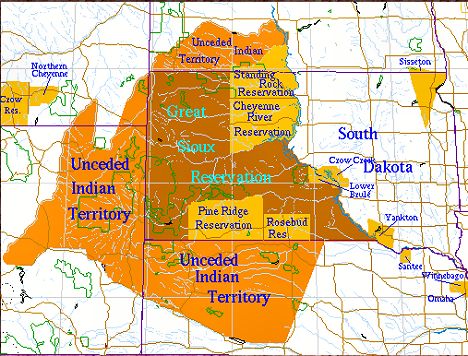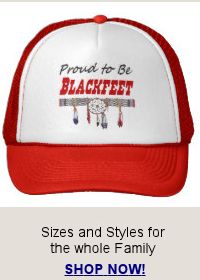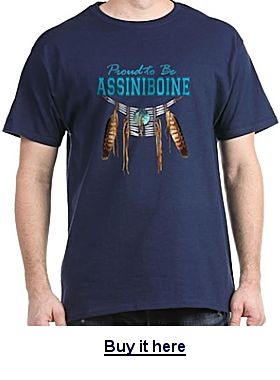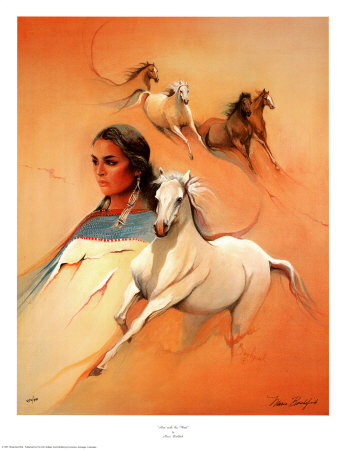In contrast to the neighboring Cheyenne and Arapaho to the north, the Comanche never developed a political idea of forming a nation or tribe. Comanche society was divided into three principal divisions, and about a dozen individual bands, each of which made decisions for their group independently of the other bands.
Bands, Gens and Clans
A division or branch of a tribe can be a single band, but usually divisions are broken down into several smaller groups called Bands. How many bands there were was largely dictated by the size of the tribe and the resources available in the areas where they lived, and whether they were nomadic hunter-gatherers or stationary farmers. A band is comprised of people who usually live in close proximity, or travel to come together at regular intervals for ceremonies and celebrations, and share cultural beliefs and political alliances. A band is usually made up of a large group of relatives loosely related to a common distant ancestor, and their spouses, children, and friends. A band may adopt members through friendships, adopt captive prisoners, and gain new members through the new relationships which are forged through marriage and business associations. Bands also share political affiliations. Membership in bands can change over time, as most tribes allowed people to move freely between bands as relationships, friendships, politics, and tempers dictated.
Bands may be further broken down into a phratry (singular) or phratries (plural), but not all tribes have phratries. A phratry contains two or more related groups, and is a brotherhood or closer kinship group than a band. A phratry may be based on close kinship, or a common bond, such as members of a particular Warrior Society or some special Medicine Society, but all the people in a single phratry are closely related in some way. A kinship phratry is further broken down into two or more groups called Gens or Clans. Some tribes have both, some have one or the other, and some tribes have neither.
A Gens (singular) or Gentes (plural) is usually patriarchial, meaning relationships are traced from the father’s line of paternity. A gens usually takes its name from some peculiarity or habit it is supposed to possess, but can sometimes be named for an animal. However, when an animal is chosen, it usually represents a trait associated with the animal. For example, Skunk may be associated with a bad smell or soft hair or good at defense, rather than as a totem animal which represents some deity or supernatural power associated with that animal. Gens usually do not have totem animals.
Often each tribe has a few gentes common to other tribes. This is caused by persons leaving their own tribe to live with another one, but, instead of uniting with some gens of the adopted tribe, they have preserved the name of their ancestral gens for themselves and their descendants.
Because members of a gens were all considered as relatives, however remote, there was a law prohibiting a man from marrying within his gens. Originally this law was strictly enforced, but like many of the ancient customs, it is no longer observed. It has become not uncommon for a man and his family, or even two or three families, on account of some quarrel or some personal dislike of the chief of their own gens, to leave it and join another. Since such people are not related by blood to the gens, they and their descendants could marry within the gens. If a band traced family relationships from the patriarchial line, a wife usually went to live with her husband’s people.
A Clan is usually matriarchial, meaning relationships are traced from the mother’s line of maternity. In the clan lineal descent, inheritance of personal and common property, and the hereditary right to public office and trust are traced through the female line. If kinship is traced through the mother in a tribe, it is usually customary for the husband to reside in the band of his wife’s family. Members of a clan still usually consider it taboo to marry someone who belongs to their clan. Clans are usually named for their totem animal or a plant that has magical or medicinal powers or the clan name describes a place where they live or some physical trait of its members. A clan may be named after an animal or object which was formerly regarded as a guardian deity. As with Gens, the clan name is not usually the common name of the animal or object after which it is named, but denotes some feature or characteristic or the favorite haunt of it. For example, one of the Seneca clans is named for the deer, commonly called neogen, ‘cloven foot’, while the clan name is another descriptive term for the deer, “hadinioñgwaiiu’, meaning ‘those whose nostrils are large and fine looking.’
The oldest, wisest female in a Clan is usually regarded as the Clan Mother, who is the top authority in the clan. Each Clan Mother has a Faithkeeper who is responsible for ceremonial preparations, weddings, funerals, and other rituals. Often certain occupations were limited to the people of a particular clan.
Membership in a clan constitutes citizenship in the tribe, conferring certain social, political, and religious privileges, duties, and rights that are denied to aliens. Many modern-day Native American Indians still maintain their clan relationships and responsibilities. Clan relationships are still so important in some tribes, that clan relationships are always included when a person introduces themselves.
Totemism, the possession or even the worship of personal or communal totems by individuals or groups of persons, is not an essential feature of all clans, but is quite common.
Chickasaw Clans
22 ViewsIn earlier times, all Chickasaws belonged to a clan of his or her mother; this is known as a matrilineal system. One of the main functions of the clan was to provide kinship with clan members in other villages. Traditionally, a person would not be allowed to marry someone within his or her own clan.
The Cheyenne Nation or Tsêhéstáno was at one time composed of ten bands which spread across the Great Plains from southern Colorado to the Black Hills in South Dakota.
Algonquian Bands and Clans
22 ViewsThe Algonquian Family adapted its name from the Algonkin tribe. This is a linguistic stock which formerly occupied a more extended area than any other language in North America . Their territory reached from the Eastern shore of Newfoundland to the Rocky Mountains.
Cherokee Bands, Gens, and Clans
23 ViewsThe Cherokee (ᏣᎳᎩ) are a Native American people historically settled in the Southeastern United States (principally Georgia, the Carolinas and Eastern Tennessee). Linguistically, they are part of the Iroquoian language family. In the 19th century, historians and ethnographers recorded their oral tradition that told of the tribe having migrated south in ancient times from the Great Lakes region, where other Iroquoian-speaking peoples were located.
This is a list of the present day locations of the reservations for the various bands of Wiyot Indians. It is a work in progress.
Nez Perce Bands
22 ViewsAt one time, there were more than fifty bands of Nez Perce. The bands and divisions of the Nez Perce are now known only approximately. The following bands were known in the early 1900s:
California Indian Bands
22 ViewsWith over one hundred federally recognized tribes, and many unrecognized tribes,California has the largest Native American population and largest number of distinct tribes of any US state. Californian tribes are characterized by linguistic and cultural diversity. A government relocation program in the 1960s also translocated members of many non-California tribes to the state of California.
The California cultural area does not exactly conform to the state of California’s boundaries, and many tribes on the eastern border with Nevada are classified as Great Basin tribes, some tribes on the Oregon border are classified as Plateau tribes, and tribes in Baja California that do not cross into California are classified as Indigenous peoples of Mexico.
Many of the tribes in California are sub-tribes or bands culturally related to other tribes, while others are independant tribes with their own cultural identity. Refer to other Bands and Clans articles for information specific to each California tribe.
Abnaki Bands, Gens and Clans
22 ViewsMany tribes have sub-tribes, bands, gens, clans and phratry. Often very little information is known or they no longer exist. Here, we have included the Abnaki Bands, Gens and Clans that we know about. If you can give us more information on a band, gen, or clan, or know of ones not listed here, please let us know.
The Abenaki were organized by clans (or families). These families used to be exogamous, meaning marriage was prohibited within the same genus or gen, but this ban was lost in the time of Lewis H. Morgan in the 19th century. In Morgan’s time, the Abenaki had the following gens:
The clan crest name is not the translation of the clan name. Example, Neix.adi means people of the Neix, a lake somewhere that their people had originated from. Neix.adi does not mean Eagle, Beaver, and Halibut. The Neix.adi use the Eagle, Beaver, and Halibut as their main crests. The clan crests were obtained hundreds of […]
Sioux divisions, tribes, and bands
22 ViewsThe Great Sioux Nation is actually made up of 18 separate tribes, or bands in the US, and 12 in Canada. These are divided into three divisions: the Lakota Sioux, Dakota Sioux, and the Nakota Sioux. Each division speaks a different, but similar, Sioux language dialect. There are also numerous subdivisions of the Sioux tribe, some included in the three main Sioux division bands, and some recognized now as tribes separate from the Sioux Nation.
Arikara Bands, Gens & Clans
22 ViewsThe Arikara were a loosely organized confederacy of sub-tribes, each of which had its separate village and distinctive name, few of which have been preserved. Arikara Bands The following names were noted during the middle of the 19th century: Hachepiriinu (Young Dogs) Hia (Band of Cree) Hosukhaunu (Foolish Dogs) Given as an Arikara band under […]
Arapaho Divisions and Bands
22 ViewsThe Arapahos and Cheyennes both belong to the great Algonquian family, and, for a long period, were closely associated. The Arapahos led the migration from the Algonquian body in the far North. The Cheyennes brought up the rear. They came from what is now Minnesota. Whether they were in league at the time or whether they formed an alliance later is unclear.
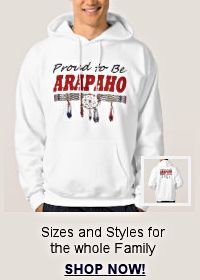 The Arapaho and Cheyenne people were always at war with the Pawnees, Utes, and Shoshoni. Until about 1840 they were at constant war with the Sioux, Kiowas, and Comanches. Both the Arapahos and Cheyennes were separated into groups by the treaty of Medicine Lodge in 1876, with principle divisions of Southern and Northern Arapahos, and Southern and Northern Cheyennes.
The Arapaho and Cheyenne people were always at war with the Pawnees, Utes, and Shoshoni. Until about 1840 they were at constant war with the Sioux, Kiowas, and Comanches. Both the Arapahos and Cheyennes were separated into groups by the treaty of Medicine Lodge in 1876, with principle divisions of Southern and Northern Arapahos, and Southern and Northern Cheyennes.
Apache Bands & Clans
22 ViewsThe Apache Indians are divided into six sub tribes, which are further divided into bands and clans. Akonye (people of the canyon). An Apache band at San Carlos agency and Ft Apache, Ariz., in 1881; probably coordinate with the Khonagani clan of the Navaho. Bourke in Journ. Am. Folk-Lore, III, 111, 1890. Apaches del Perrillo […]
Iroquois Clans
22 ViewsWithin each of the six nations, people are divided into a number of matrilineal clans. The number of clans varies by nation, currently from three to eight, with a total of nine different clan names.
Shawnee Divisions and Clans
28 ViewsThe Shawnee have 5 divisions, which may be regarded as phratries, or perhaps as originally distinct tribes, and the members of these divisions occupied different sides of the council house in their public assemblies.
The villages of the tribe have generally taken their names from these divisions. The Woketamosi division mentioned by Heckewelder is probably one of these, but is not the Piqua.
The Shawnee have thirteen clan associations. The Turtle clan occupies an important place in their mythological traditions. At a conference in 1793 the Shawnee signed with the snake totem.
Kinship Terminology Explained
64 ViewsThe symbols, terms, and concepts used when talking about kinship relationships can be confusing to the layman. Here is a kinship terms glossary to help you out.
The three Canadian Blackfoot bands and the American Blackfeet acknowledge a blood relationship with each other, and, while distinct, still consider themselves a nation. There are really only three Blackfoot bands. Those caught on the American side when the US – Canadian border was drawn became a separate tribe only because they came under US jurisdiction and the US Government mispelled their name. Collectively, they make up the Blackfoot Nation.
Kumeyaay Bands
22 ViewsThe four indigenous tribes which are native to the County of San Diego in Southern California include the Cahilla, Cupeno, Luiseno, and the Kumeyaay tribes. The Kumeyaay consist of two related groups, the Ipai and Tipai.The two coastal groups’ traditional homelands were approximately separated by the San Diego River: the northern Ipai (extending from Escondido […]
Assiniboine Bands
22 ViewsAt one time, more than fourty Assiniboine bands roamed North America. Modern scholars say they split from the main Sioux tribes in the early 1700s, but the Assiniboine people say they have always been a separate tribe.
Brief Summary:
The Battle Mountain Band, Elko Band, South Fork Band, and the Wells Band collectively make up the Te-Moak Tribe of Western Shoshone Indians. The Te-Moak Tribal Council has total jurisdiction over all tribal lands, while the bands (colonies) retain sovereignty over all the other affairs, and each band has its own separate governing Band Council.
Brief Summary:
The Washoe Tribe of Nevada/California is located on the Nevada/California border. The Washoe are an ancient people with ties to the California and Great Basin cultures. Lake Tahoe, Nevada was the center of Washo culture.
The Tribe has four communities, three in Nevada (Stewart, Carson, and Dresslerville), and one in California (Woodfords). There is also a Washoe community located within the Reno-Sparks Indian Colony. Each of these communities have two representatives on the Washoe Tribal Council.Off reservation Washoe people also have two representatives on the tribal council. Each community also has a Community Tribal Council with five members from their community on their council.
Yakutat Tlingit Clan System
24 Views
Kaakutkeich Yoo xat du wasaakw Tlingit tleina.
Kwaash kikwaan naa aya xat Tiskw Hit dax.
My name is Kai Monture.
My clan is the Kwaashkikwaan.
My house is the Owl house.
My land is from Icy Bay down to Yakutat.
Yakutat Bay and the area around it was part of the 263 miles of land owned by the Tlingit people. The area they owned was from Katalla to Lituya Bay.The land was owned by five clans.
Here are the literal meanings of Wailaki band and place names based on the work of Baumhoff in “California Athabascan Groups.” Alternate Spellings: Kakwits, Kastel Pomo, Kenesti, Southern Athapaskan, Tlachee, Tlackes, Uye Lackees, Wailakki, Wilacki, Wi-Lak-ke, Wy-Tackee-Yukas, Wry Lackers, Wye Lackees, Wylackies, Ylackas, Wintun, Wintoons, Kenesti, Patawe, Wintu, Northern Wintun Major Divisions: Literal meanings are […]
The Ojibwe clan system
23 ViewsPeople of all nations in the world essentially have the same basic needs: food, protection, education, medicine and leadership. Traditionally, the Ojibway Clan System was created to provide leadership and to care for these needs.
There were seven original clans and each clan was known by its animal emblem, or totem. The animal totem symbolized the strength and duties of the clan. The seven original clans were each given a function to serve for their people.
At the time of major white penetration of the Great Basin and the Snake River areas in the 1840s, there were seven distinct Shoshoni groups.
The Eastern Shoshoni, numbering about 2,000 under their famous Chief Washakie, occupied the region from the Wind River Mountains to Fort Bridger and astride the Oregon Trail. Their descendants today live on the Wind River Reservation.
Two other divisions having similar cultures were the Goshute Shoshoni and the Western Shoshoni.
